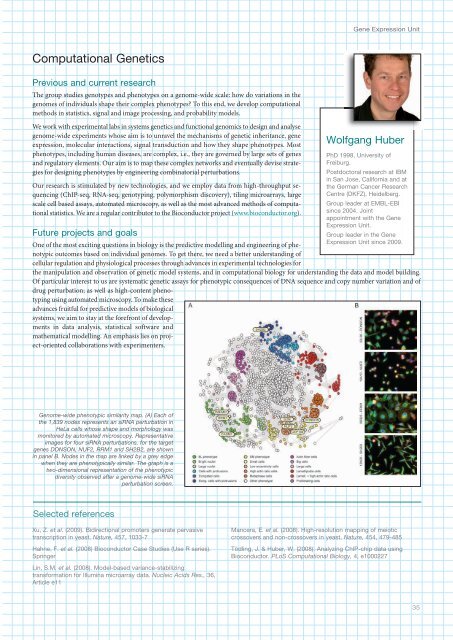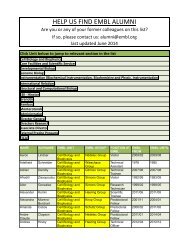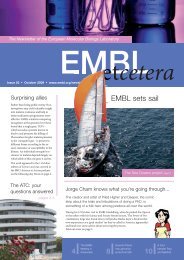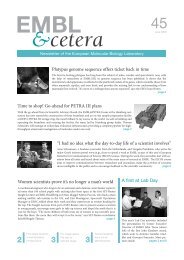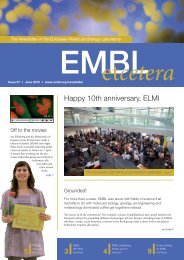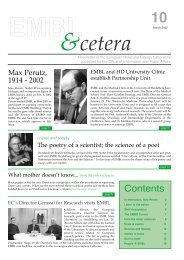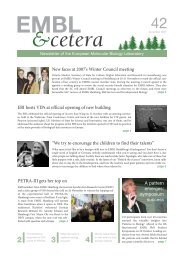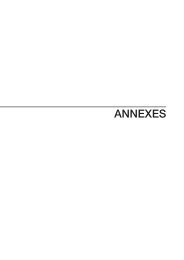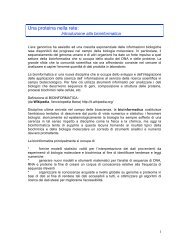Gene Expression UnitComputational GeneticsPrevious and current researchThe group studies genotypes and phenotypes on a genome-wide scale: how do variations in thegenomes of individuals shape their complex phenotypes? To this end, we develop computationalmethods in statistics, signal and image processing, and probability models.We work with experimental labs in systems genetics and functional genomics to design and analysegenome-wide experiments whose aim is to unravel the mechanisms of genetic inheritance, geneexpression, molecular interactions, signal transduction and how they shape phenotypes. Mostphenotypes, including human diseases, are complex, i.e., they are governed by large sets of genesand regulatory elements. Our aim is to map these complex networks and eventually devise strategiesfor designing phenotypes by engineering combinatorial perturbations.Our research is stimulated by new technologies, and we employ data from high-throughput sequencing(ChIP-seq, RNA-seq, genotyping, polymorphism discovery), tiling microarrays, largescale cell based assays, automated microscopy, as well as the most advanced methods of computationalstatistics. We are a regular contributor to the Bioconductor project (www.bioconductor.org).Future projects and goalsWolfgang HuberPhD 1998, University ofFreiburg.Postdoctoral research at IBMin San Jose, California and atthe German Cancer ResearchCentre (DKFZ), Heidelberg.Group leader at <strong>EMBL</strong>-EBIsince 200. Jointappointment with the GeneExpression Unit.Group leader in the GeneOne of the most exciting questions in biology is the predictive modelling and engineering of phenotypicoutcomes based on individual genomes. To get there, we need a better understanding ofExpression Unit since 2009.cellular regulation and physiological processes through advances in experimental technologies forthe manipulation and observation of genetic model systems, and in computational biology for understanding the data and model building.Of particular interest to us are systematic genetic assays for phenotypic consequences of DNA sequence and copy number variation and ofdrug perturbation; as well as high-content phenotypingusing automated microscopy. To make theseadvances fruitful for predictive models of biologicalsystems, we aim to stay at the forefront of developmentsin data analysis, statistical software andmathematical modelling. An emphasis lies on project-orientedcollaborations with experimenters.Genome-wide phenotypic similarity map. (A) Each ofthe 1,839 nodes represents an siRNA perturbation inHeLa cells whose shape and morphology wasmonitored by automated microscopy. Representativeimages for four siRNA perturbations, for the targetgenes DONSON, NUF2, RRM1 and SH2B2, are shownin panel B. Nodes in the map are linked by a grey edgewhen they are phenotypically similar. The graph is atwo-dimensional representation of the phenotypicdiversity observed after a genome-wide siRNAperturbation screen.Selected referencesXu, Z. et al. (2009). Bidirectional promoters generate pervasivetranscription in yeast. Nature, 57, 1033-7Hahne, F. et al. (2008) Bioconductor Case Studies (Use R series).SpringerLin, S.M. et al. (2008). Model-based variance-stabilizingtransformation for Illumina microarray data. Nucleic Acids Res., 36,Article e11Mancera, E. et al. (2008). High-resolution mapping of meioticcrossovers and non-crossovers in yeast. Nature, 5, 79-85Tödling, J. & Huber, W. (2008). Analyzing ChIP-chip data usingBioconductor. PLoS Computational Biology, , e100022735
<strong>EMBL</strong> Research at a Glance 2009Maja KöhnPhD 2005 MPI for MolecularPhysiology, Dortmund.Postdoctoral work at HarvardUniversity, Cambridge,Massachusetts.Group leader at <strong>EMBL</strong> since2007.Investigation of phosphatases using chemicalbiology toolsPrevious and current researchProtein dephosphorylation by protein phosphatases (PPs) is fundamental to a vast number of cellularsignalling processes and thus to physiological functions. Impairment of these processes contributesto the development of human diseases such as cancer and diabetes. The investigation ofphosphatases is challenging, mainly due to their broad substrate specificity and the lack of toolsto selectively study particular phosphatases. Therefore, knowledge of phosphatase function andsubstrate interaction is generally still quite limited. Our main interest is thus to control and investigatephosphatases with the help of chemical tools, based on phosphoinositide and peptidesynthetic organic chemistry as well as protein semisynthesis, and also with molecular biology approaches.We are currently focussing on protein tyrosine phosphatases (PTPs) and dual specificityphosphatases (DSPs).We are working on the design of inhibitors for PTPs based on chemical modification of protein/peptidesubstrates in a way that they a) cannot be dephosphorylated and b) show an increasedhalf-life in the body. Thus, upon binding, the phosphatase cannot fulfil its function and is boundto the modified substrate with natural high affinity. In this way, one does not have to rely on therandom discovery of effector molecules by, for example, exhaustive screening of large compound libraries. In addition, we are looking intoother possible natural substrates of phosphatases such as phosphoinositides. Working on new synthetic strategies to simplify access to thesecompounds as well as their analogues is necessary in order to be able to control the function of lipid phosphatases in cells.In case the substrate specificity of a PTP/DSP is not known, screening of focussed peptide libraries that are designed based on for examplestructural data of the phosphatase is necessary. When applying the above described strategy, the discovery of artificial or even natural substrateswill lead to an inhibitor of the phosphatase of interest. Here, we are particularly interested in the PRL family of phosphatases, whichis involved in several types of cancer. In addition to creating effector molecules using synthetic organic chemistry, we also apply protein semisynthesisand molecular biology approaches to obtain information about natural substrates, regulation and networks of these phosphatases.Future projects and goalsWe are interested in further developing chemical methods to stabilise (phospho-)peptides and in working on novel cell penetration concepts.We are planning on modifying phosphatases semisynthetically in order to control their function, not through effector molecules but intrinsically.Developing effector molecules for the highly non-specific PSTPs is a long-term goal. The activity of these phosphatases is controllednot only by specificity, but also by cofactors and cellular localisation, which adds to the challenge of finding tools to selectively target thesephosphatases in the context of the cell.Selected referencesJonkheijm, P., Weinrich, D., Köhn, M., Engelkamp, H., Christianen,P.C., Kuhlmann, J., Maan, J.C., Nusse, D., Schroeder, H., Wacker,R., Breinbauer, R., Niemeyer, C.M. & Waldmann, H. (2008).Photochemical surface patterning by the thiol-ene reaction. AngewChem Int Ed Engl., 7, 21-2Köhn, M., Gutierrez-Rodriguez, M., Jonkheijm, P., Wetzel, S.,Wacker, R., Schroeder, H., Prinz, H., Niemeyer, C.M., Breinbauer, R.,Szedlacsek, S.E. & Waldmann, H. (2007). A microarray strategy formapping the substrate specificity of protein tyrosine phosphatase.Angew Chem Int Ed Engl., 6, 7700-7703Watzke, A., Köhn, M., Gutierrez-Rodriguez, M., Wacker, R.,Schroder, H., Breinbauer, R., Kuhlmann, J., Alexandrov, K.,Niemeyer, C.M., Goody, R.S. & Waldmann, H. (2006). Site-selectiveprotein immobilization by Staudinger ligation. Angew Chem Int EdEngl., 5, 108-11236


